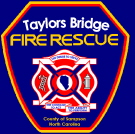 Home    Home Fireplace Safety Inside the Home Urban-Interface Areas Wood Shake and Shingled Roof Hazard |
Cooking Safety Keep a close eye on your cooking. If you must leave the kitchen for a short time, take a pot holder or another item along to remind you that something’s on the stove. Declare a three – foot (one – meter) “kid – free zone’’ around your stove and keep kids and pets away. Stay alert. Don’t cook if you’re sleepy, if you have been drinking alcohol or if you are taking medication that makes you drowsy. Keep pot holders, food
packaging, dish towels and any other combustibles off your stove
top. Keep
your
kitchen clean. Built-up grease can catch fire. Clean your oven, stove
and countertops often.
Roll up your sleeves. Keep loose clothing away from burners and hot ovens. Keep curtains and anything that burns at least three feet (one meter) away from your stove. Heater Safety Keep all space heaters at least three feet (one meter) away from walls, furniture and anything else that can burn. Use
only space heaters that carry the label of an independent testing lab.
Have your central – heating system serviced professionally before the start of each heating season. Have your chimney inspected (and cleaned when necessary) once a year (see Fireplace Safety). If you have a fireplace, use a screen to catch sparks. Keep fireplace fires small and never burn trash or anything except wood in your fireplace. Never use or store propane gas tanks inside your home. If you have a wood stove, have it inspected professionally once a year and be sure it conforms to local installation codes. Use only cast-iron or steel wood burning stoves that carry the label of an independent testing lab. Electrical
Safety
Be sure your fuses and circuit breakers are sufficient for the loads (amperage) that each circuit is designed to handle. Use only one heat-producing appliance on the same circuit at a time. Install ground fault circuit interrupter protection (GFCI’s) for all kitchen-counter, outdoor, basement, garage and bathroom outlets. Replace damaged appliance and extension cords. Don’t plug extension cords into each other. Don’t run extension cords under carpets, across doorways or pinch them under furniture or between walls and furniture. If any power tool or appliance feels too hot or smells funny, unplug it immediately and have it serviced or replaced. General Home Safety Install at least one smoke detector on every floor of your home, including the basement and in each sleeping room and a point centrally located in the corridor or area giving access to each sleeping area. Know the sound of your smoke detector. Newer models feature a universal signal pattern – three beeps followed by a one and a half second pause. “Change your clocks, change your batteries.” Replace batteries in smoke detectors twice a year. Test all smoke detectors every month and replace any detectors more than ten years old. Consider having an automatic home fire sprinkler system installed. Keep combustible materials and flammable liquids away from furnaces and water heaters. Have your entire household help make a home fire escape plan and practice it at least twice a year. Know two unobstructed exits (usually a door and a window) from each room in your home. |
||||||